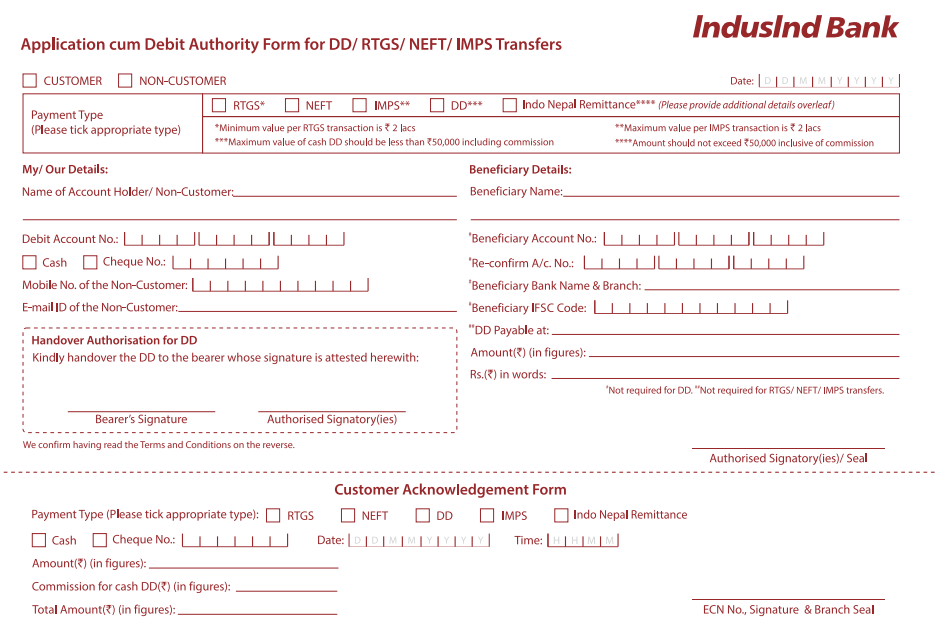
IMPS Full Form, Meaning, Features, Benefits and How to do IMPS
IMPS stands for Immediate Payment Service, India's instant fund transfer system that operates 24/7 for secure, real-time money transfers across banks, enabling instant transactions through mobile banking, internet banking, and ATMs. Let’s learn how to utilise it, understand transfer limits and charges, and learn why it's one of the most reliable digital payment options available today.
What is IMPS?
Immediate Payment Service, also known as IMPS, is a real-time electronic fund transfer system that works 24/7, allowing instant money transfers between banks. It is developed by the National Payments Corporation of India (NPCI) and regulated by the Reserve Bank of India (RBI).
By using IMPS, individuals and businesses can send and receive funds securely, make payments, pay bills, or transfer money seamlessly. IMPS offers a reliable and efficient solution through mobile banking, internet banking, ATMs, and even bank branches.
IMPS Full Form in Banking
IMPS full form is Immediate Payment Service. It is an RBI-regulated instant digital payment system that enables secure, real-time transfer of funds between bank accounts 24/7 across India.
How Does IMPS Work?
IMPS works 24/7 through mobile banking, internet banking, or ATMs. To use IMPS, a sender initiates a transfer through their bank's app or online portal by providing the recipient's bank account number and IFSC code, or their mobile number and Mobile Money Identifier (MMID).
The NPCI handles the transaction, debiting the sender's account and crediting the recipient's bank account instantly. Here’s how IMPS transfers work:
Step 1: The sender initiates the IMPS transfer through their bank’s mobile app, internet banking portal, or SMS
Step 2: The transaction details are sent to the NPCI via the IMPS switch.
Step 3: NPCI validates the sender’s account details and balance, and routes the request to the beneficiary’s bank using its directory services.
Step 4: NPCI sends an authorisation request back to the sender’s bank once validation is successful.
Step 5: The sender’s bank debits the specified amount from the sender’s account.
Step 6: NPCI clears and settles the transaction with the RBI, and then credits the amount to the beneficiary’s bank account.
Step 7: The beneficiary’s bank credits the amount to the beneficiary’s account and notifies NPCI.
Step 8: Both the sender and the beneficiary receive confirmation messages about the successful IMPS transaction.
Example Of IMPS
Let’s assume you made an IMPS transaction at 11:00 a.m. using your bank's mobile app to send ₹5,000 to a friend's bank account by confirming the transfer with an OTP. The money will be arrive in your friend's account within seconds, say 11:10 a.m. This is possible through IMPS, where immediate fund transfers take place between any two bank accounts, allowing you to complete transactions for personal needs or business payments quickly.
Eligibility Of IMPS
Here are the requirements to send money via IMPS:
For Remitter (To Send Money to Person):
- Mobile Money Identifier (MMID) of the beneficiary
- Mobile number of the beneficiary
- Name of the beneficiary
- MMID and MPIN of the remitter
For Remitter (To Send Money to Account):
- Name of the beneficiary
- Account number of the beneficiary
- IFS code of the beneficiary bank
For the Beneficiary (Receiver):
- MMID of beneficiary
- IMPS registration with the bank
How To Use IMPS?
IMPS provides a variety of methods for transferring money quickly and conveniently. Here is how you can leverage IMPS through different platforms:
IMPS via Mobile Banking or Internet Banking
Step 1: Log in to your bank’s mobile banking app or internet banking portal with your credentials.
Step 2: Navigate to the ‘Fund Transfer’ section.
Step 3: Enter the beneficiary's details, including name, mobile number, bank account number or MMID, and IFSC code.
Step 4: Select ‘IMPS’, enter the amount, verify the details, and confirm the transaction using your MPIN or OTP.
IMPS via SMS
Step 1: Check if your bank supports IMPS via SMS.
Step 2: Draft an SMS in the format provided by your bank.
Step 3: Include the beneficiary’s MMID and the amount to be transferred.
Step 4: Send the SMS to the bank’s designated number for IMPS transactions.
IMPS via ATM
Step 1: Visit the nearest ATM of your bank and insert/swipe your debit card.
Step 2: Enter your 6-digit ATM PIN to access the ATM menu.
Step 3: Navigate to the ‘Fund Transfer’ section and select the ‘IMPS’ option.
Step 4: Enter the beneficiary's details, including their mobile number and MMID, or account number and IFSC code.
Step 5: Enter the amount to be transferred and verify the details.
Step 6: Click on the ‘Confirm’ or ‘Send’ button to complete the transfer.
IMPS via Bank Branch
Step 1: Visit your bank branch and request an IMPS transfer form.
Step 2: Fill in the form with the beneficiary’s name, account number, bank details, transfer amount, and your account information.
Step 3: Submit the completed form along with the applicable IMPS fee.
Step 4: The bank will process the transaction and provide a confirmation slip.
IMPS Limit Per Day
According to RBI and NPCI guidelines, the maximum IMPS limit per day is ₹5 lakh, and the maximum limit per transaction is also ₹5 lakh.
IMPS Transfer Application Form
You can collect the IMPS form by visiting your bank branch. The forms of each bank may differ from those of others. Here is a sample of the IndusInd IMPS form:

IMPS Transfer Charges
Here’s an overview of the IMPS charges of different Indian banks:
Bank | IMPS Charges (per transaction + GST) |
State Bank of India | No charges |
Kotak Mahindra Bank | No charges |
ICICI Bank | ₹2.50 – ₹15.00 |
HDFC Bank | ₹3.50 – ₹15.00 |
Axis Bank | ₹2.50 – ₹10.00 |
Canara Bank | ₹0 – ₹20.00 |
Punjab National Bank | ₹6.00 – ₹12.00 |
Bank of Baroda | ₹2.50 – ₹25.00 |
IMPS Timings
IMPS transactions are 24x7, including public holidays and weekends. Some banks might limit IMPS timings (e.g., 8:00 a.m. to 8:00 p.m.) for transfers done through bank branches.
What is the IMPS Transfer Limit?
Mode | Per Transaction Limit | Daily Limit | Notes |
Mobile Banking (App) | ₹5,00,000 | ₹5,00,000 to ₹25,00,000 | May require 24-hour wait for new payees |
Internet Banking | ₹5,00,000 | Bank-specific | May vary for personal/corporate users |
SMS Banking | ₹1,000 to ₹5,000 | Often ₹5,000 max | Limited features, for basic users |
MMID + Mobile No. Transfer | ₹5,000 to ₹25,000 | ₹25,000 (typical cap) | Lower limit due to higher fraud risk |
ATM IMPS Transfer | ₹50,000 to ₹2,00,000 | Bank-specific | Limited UI features |
Benefits Of IMPS
- IMPS facilitates real-time fund transfers, crediting the recipient's account immediately.
- With IMPS, customers can send money at any time, 24x7, even on weekends and public holidays.
- IMPS is supported across different platforms, such as mobile banking applications, internet banking, ATMs, and even SMS-based services. This provides a smooth and user-friendly experience across different devices.
- Customers can send up to ₹5 lakh per day, which makes IMPS ideal for both personal and business transactions, including high-value transactions.
- IMPS is an economical choice, with minimal transaction charges usually between ₹5 and ₹15, subject to the bank.
- IMPS ensures security by using OTP-based authentication and encrypted communication. This protects financial transactions from fraud.
- IMPS avoids the sharing of complete bank account information. Transfers can be initiated with minimum information, such as a registered mobile number, MMID, or Aadhaar number.
- Remittances can be done through several modes, such as mobile banking platforms, internet banking, ATMs and SMS services.
- IMPS enables remittances internationally. Money can be remitted from overseas to an Indian account by money transfer service providers that have partnerships with Indian banks that provide IMPS facilities.
IMPS vs Other Payment Methods
Feature | IMPS | NEFT | RTGS |
Settlement Speed | Instant (real-time) | Batch processing (half-hourly) | Real-time |
Availability | 24x7, including weekends and holidays | 24x7, including weekends and holidays | 24x7, including weekends and holidays |
Minimum Transfer Limit | ₹1 | ₹1 | ₹2,00,000 |
Maximum Transfer Limit | ₹5,00,000 (may vary by bank) | No upper limit (bank-specific caps may apply) | No upper limit |
Ideal Use Case | Small to medium urgent transfers | Non-urgent transfers of any amount | Large-value urgent transfers |
Charges | Varies by bank, often with minimal charges | Free for online savings account transfers, minimal charges for others | Varies by bank; often small charges |
Access Channels | Mobile apps, internet banking, ATMs | Internet banking, mobile banking, and bank branches | Internet banking, mobile banking, and bank branches |
Beneficiary Details | Mobile number + MMID or Account No. + IFSC | Account No. + IFSC | Account No. + IFSC |
Conclusion
IMPS is transforming digital payments with ease and security. Its round-the-clock service empowers users anytime, anywhere. The 24x7 facility enables users to make transactions at their convenience, getting around the shortfalls of payment systems such as NEFT and RTGS.
Related Articles:
1. What is NEFT?
2. What is RTGS?
3. Differences between NEFT, RTGS and IMPS
4. IMPS Limit
5. IMPS Charges
6. IMPS Reference Number: Meaning, and How to Track it Online
Frequently Asked Questions



